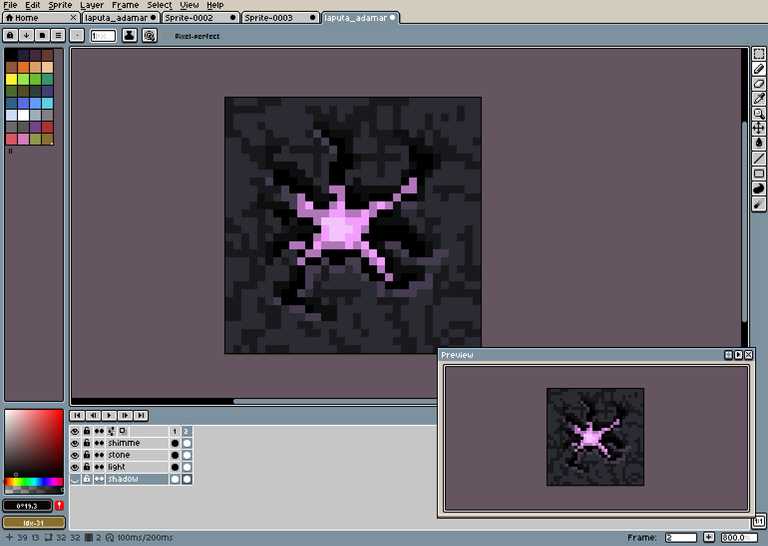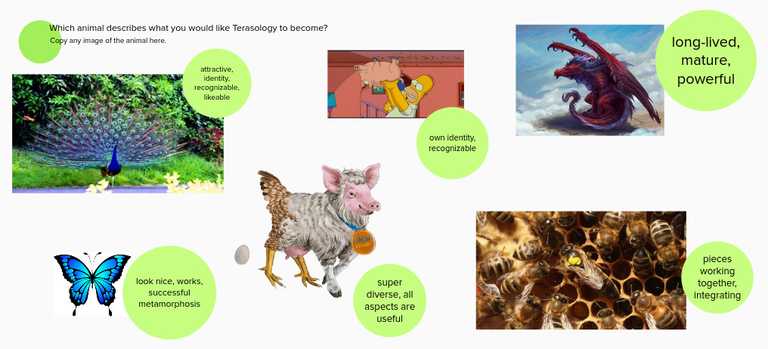Welcome to the return of TeraSaturday, a not-so-weekly update post about all the neat stuff that has been going on in the world of Terasology! Half blog, half changelog, completely cool.
📯 Terasology Alpha 19 (v4.3.0) released!
We are happy to announce that we just released Terasology Alpha 19 (v4.3.0). While this release mainly consists of foundation work and "under-the-hood" improvements that are not visible in the game, our contributors also added a few quite visible goodies such as visual damage indicators (see TeraSaturday #11) and a world generation plugin for Flying Islands 🛸
📰 Since last TeraSaturday ...
Many thanks to our contributors since last TeraSaturday #11: @antag99, @DarkWeird, @keturn, @pollend, and @skaldarnar.
After the preparational groundwork of the previous week, the gestalt v7 efforts of this week led to moving basically each and every package and file in the engine. As a result most of our Ωmega modules had to be adjusted accordingly. A big thank you to @keturn, @pollend and @DarkWeird for their dedication! 🤗
@pollend and @DarkWeird continued to brainstorm and discuss dependency injection (DI) for/with/in/through/by (🤪) gestalt. While this is still in planning, we're looking forward to hear more about it soon™️ - so keep checking the TeraSaturday posts regularly 😉
Apart from his substantial contributions to the gestalt v7 efforts, @keturn continued improving our test situation (#4573, #4574, #4579) and started to investigate parallelization potential of our tests. While he discovered that a parallel approach does indeed offer some speed-up, it was neither a quantum leap nor free of issues. Especially our ModuleTestingEnvironment (MTE) tests are troublesome as well as integration tests colliding on network ports, etc. Still, we hope to be able to leverage parallelization especially for decoupled, dependency-less tests like unit tests in the future.
Last but not least, we'd like to send out a warm welcome and thank you to our new contributor @antag99 who made his debut in our community by fixing two recently introduced bugs 🎉 The first bug he fixed was likely introduced by our recent gestalt v7 preparations: after playing in a Terasology world, exiting to the main menu crashed the game. The second bug he fixed was likely introduced by our recent JOML efforts: the target indication box on a previously targeted block to stayed rendered even when rotating the camera upwards so that it points at a block that is not within range.
In total, we merged 10 engine PRs and 130 PRs on modules.
🎀️ Community Highlights
🔮 Laputa Adamant
We start this week's community highlights with the finishing touches to the Flying Islands module, which is in the just released alpha 19 (engine v4.3.0). @sin3point14 did a great job implementing a world gen plugin to add flying islands to the world.
But what power lets these islands float in the air (and prevent them from falling down from the sky in case Falling Blocks is enabled)? On the tracks of Gulliver's Travels we discover that there is a strange block at the core of each of the islands, shimmering of magic.
Working on a new block texture for the
Laputa Adamantblock in Flying Islands was pretty fun. I used thecontrols opportunity to try out aseprite for the pixel art, and am pretty satsified with how intuitive the UX is. I tried to catch the magical essence of the block - it is floating for some non-obvious reason, there has to be magic involved!✨ - by giving it a cracked look, with a purple light shining from the core.After @4Denthusiast pointed out that we support animated block tiles the frame-by-frame animation of aseprite came in pretty handy, and now we have a pulsating, magical block 🙃
-- @skaldarnar

✔️ Writing Actionable Action Items
What sounds like a trivial issue is actually something that's rarely done and far from simple - action items are results of tests, discussions, meetings and other efforts that are too often neglected. Like taking notes in general, during a discussion, presentation, course or meeting noting down action items seems unnecessary. Why? Because in the moment the notes should be taken, everything seems perfectly clear and intuitive to the point of obviousness. Why bother writing down the obvious...
Furthermore, not all action items you might be inclined to write down after all are actually feasible. Closely related to the art of realistic goal planning, deriving well-sized and feasible action items and writing them down in a clear, structured and understandable manner requires practise and experience. If action items are too wide-scoped, they take a lot of effort and time to complete which negatively impacts the sense of achievement. However, if they are too small and manifold, they can seem tedious and boring and create a sense of being taken for a fool. Further, if action items are not feasible, they will lie around and be ignored to the point that - once they become feasible - everybody will assume they're still not feasible and keep ignoring them.
We recently observed that instead of writing up actionable action items as GitHub issues that are easy for everybody willing to contribute to find, we kept the action items in our org meeting document or as cards on our Trello boards. Both of them neither improve the visibility of the action items for new contributors, nor reduce maintainance efforts in terms of liaising potential contributions with the action item.
That's why, @pollend started an effort to write up GitHub issues based on action items listed in our org meeting document and Trello boards. In a first step, this mainly targeted improvements for "Josharias Survival" one of our main gameplays. You can find the newly created and actionable items in the associated "JoshariasSurvival" repository. We hope that these enable interested contributors to get started with contributing gameplay improvements for Terasology.
📚 Documentation Cleanup
Spring is around the corner, as are all the GSOC students eager to dive deeper into the Terasology code base, so we put some effort into cleaning up the Terasology Wiki. It all started off with a simple architectural overview of the typical Terasology workspace drawn by @skaldarnar.
As you can see in the diagram, Terasology is build from many building bricks, that together turn into a game. The longer you work with the code, the more natural all this feels to you, but for somebody just scratching the surface this can be overwhelming at times. So, let's have a brief look at what the different parts are, and what they are used for.
The engine forms the core, and resides alongside the default facade and subsystems in (MovingBlocks/Terasology).
For instance, this inlcudes the core logic of the world generation framework, the EntityManager responsible for juggling all the entities, subsystem to handle networking or serialization - these kinds of things.
Facades are an abstraction to allow to use the game in different ways, e.g., a player typically uses the PCFacade for a "normal" gamepaly experience, a headless server runs without a graphical frontend, and we could also think of a lightweight 2D rendering layer for a web-based server atlas.
This core is backed by several in-house libraries, such as MovingBlocks/gestalt providing the entity system and module management, or our own UI library MovingBlocks/TeraNUI. You typically don't interact too closely with them if you're working in module space, and even for working on the engine it's not required to have these libraries checked out. However, it's more than likely that you'll encounter the one or other bug in here - contributions for fixin those are always welcome. 💚
The actual game content is added by modules on top of that. Terasology modules reside in the Terasology Github organization and are automatically covered by our CI pipeline. All the game's assets and pretty much all of the logic resides here - from Health and Inventory over world gen modules to advanced ItemPipes or FlowingLiquid simulations, you can find that in modules. Gameplay templates stitch a bunch of modules together to give the player an easy start with a pre-selected module lineup.
If you want to learn more, check out the Terasology Wiki. Special thanks to @casals and @Niruandaleth for helping with cleaning things up.
Let's end this post with a teaser for a TeraSpotlight post about our recent community pulse-check workshop that will (hopefully) come up soon™️: Have you ever thought about what animal Terasology might be? - We neither 😁 But then we decided to try... here's what we came up with ... 🥚 🐑 🐮 🐽

